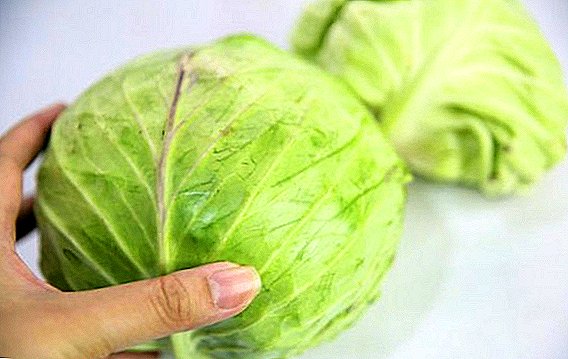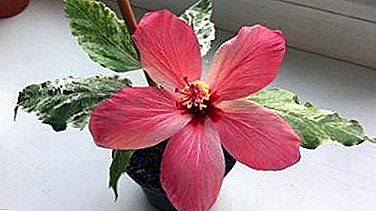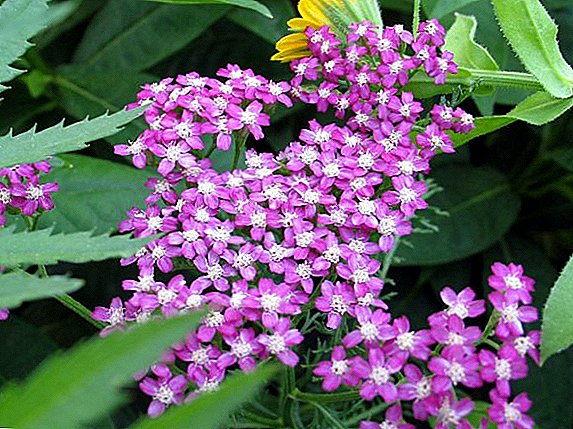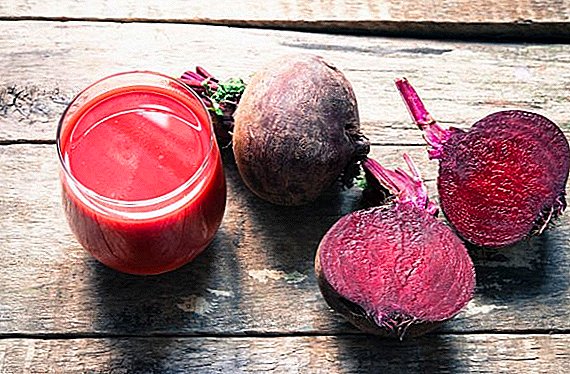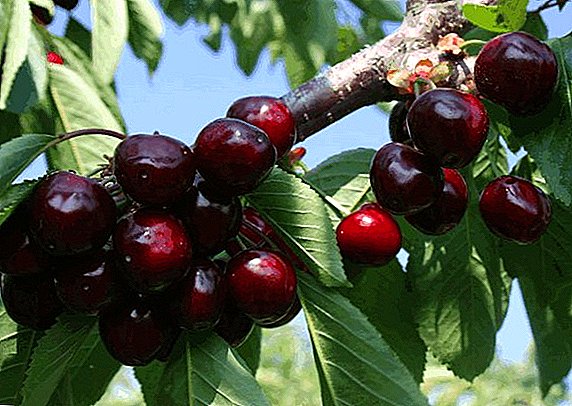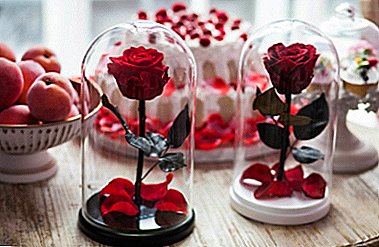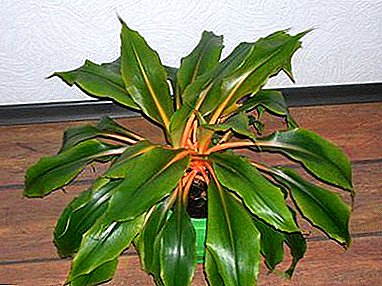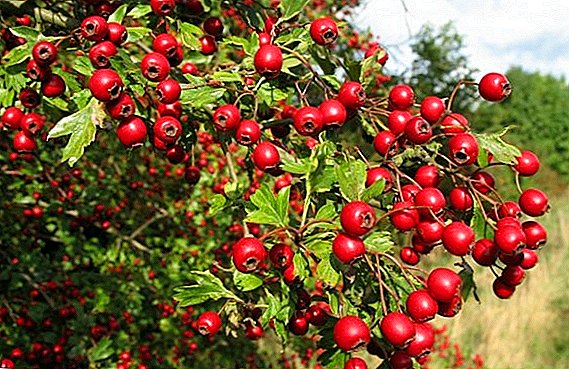 Hawthorn is a shrub that can be found in the temperate latitudes of the northern hemisphere. It is widely known as a good melliferous, ornamental and medicinal plant. Consider a photo and description of the most common types of hawthorn.
Hawthorn is a shrub that can be found in the temperate latitudes of the northern hemisphere. It is widely known as a good melliferous, ornamental and medicinal plant. Consider a photo and description of the most common types of hawthorn.
Common or Spiny
This species is distributed throughout Europe. It is a small tree or shrub, reaching a height of 8 m. The leaves are oval, three-lobed, placed on petioles up to 2 cm long. The surface of the leaf blade is bare, dark green on top and light green below. The bark of the tree is light gray in color, but the branches are red-brown, covered with a few spines up to 2 cm long. The shrub blossoms in small inflorescences.  Flowers are white or pink, reach 1.5 cm in diameter. Fruits are spherical, elongated, up to 1 cm in diameter, red-brown in color. In the juicy pulp of the fruit contains 2-3 bones. Flowering period - May-June, fruiting - August. The fruits and flowers of Hawthorn ordinary are used in traditional medicine as a medicine. They are eaten fresh and canned.
Flowers are white or pink, reach 1.5 cm in diameter. Fruits are spherical, elongated, up to 1 cm in diameter, red-brown in color. In the juicy pulp of the fruit contains 2-3 bones. Flowering period - May-June, fruiting - August. The fruits and flowers of Hawthorn ordinary are used in traditional medicine as a medicine. They are eaten fresh and canned.
Important! Hawthorn is used in folk medicine as a cardiovascular and sedative. However, along with the beneficial effect of this plant has contraindications. It is not recommended to use it in pregnant and lactating women.
Altaic
In nature, Altai hawthorn grows in Central and Central Asia. The tree reaches a height of 6 m, it can be attributed to the light-loving plants that live on stony soils with a moderate content of mineral elements. Leaf blades are bare, oval-triangular in shape, bluish-green. Flowers are collected in umbrella inflorescences of white color.  Fruits of spherical shape with a diameter up to 1 cm, orange-yellow color. The pulp contains 5 seeds. Fruiting begins in the sixth year. Altai hawthorn has a good winter hardiness and an average growth rate. The species is protected in the reserves. Flowers and fruits are used in traditional medicine.
Fruits of spherical shape with a diameter up to 1 cm, orange-yellow color. The pulp contains 5 seeds. Fruiting begins in the sixth year. Altai hawthorn has a good winter hardiness and an average growth rate. The species is protected in the reserves. Flowers and fruits are used in traditional medicine.
Fan-like
In the wild, it is found in northeastern regions of North America. Since it belongs to frost-resistant, drought-resistant and soil-demanding plants, it is also common in culture in Russia in the north-western regions.  This multi-trunk tree reaches 6 m in height, the branches of which are covered with numerous curved spines up to 6 cm long. The leaf blades of a diamond shape are placed on the petioles up to 4 cm long. Flowers are white, reach a diameter of 2 cm and collected in inflorescences. The fruit is a bright red color elliptical shape with juicy pulp. The plant blooms in May, fruits - in September. Often used to create live fences.
This multi-trunk tree reaches 6 m in height, the branches of which are covered with numerous curved spines up to 6 cm long. The leaf blades of a diamond shape are placed on the petioles up to 4 cm long. Flowers are white, reach a diameter of 2 cm and collected in inflorescences. The fruit is a bright red color elliptical shape with juicy pulp. The plant blooms in May, fruits - in September. Often used to create live fences.
Daursky
The range of this species is located in the southern regions of Eastern Siberia, the Far East, the northern part of China and Mongolia. Bushy trees, reaching a height of 6 m, can often be found on the mountain slopes, in river valleys, among shrubs. The branches of lilac shade have spines up to 2 cm long. Oblong leaf blades with pointed end, not lowered, grow on petioles up to 1.5 cm long.  Flowers of white color with purple anthers are collected in inflorescences. Fruits are edible, spherical shape, red-orange color. Shrub blossoms in May, fruiting - in September. In autumn, the leaves of Dahurian hawthorn blush. It is used as a medicinal plant and with a decorative purpose as a hedge.
Flowers of white color with purple anthers are collected in inflorescences. Fruits are edible, spherical shape, red-orange color. Shrub blossoms in May, fruiting - in September. In autumn, the leaves of Dahurian hawthorn blush. It is used as a medicinal plant and with a decorative purpose as a hedge.
Douglas
In nature, it grows in the north and east of the United States and southwest Canada. The tree trunk reaches a height of 13 m, and in diameter - up to 50 cm. The branches can be dangling and form a dense crown. There are practically no spikes on them. The bark is brown, the branches are reddish. The oval-shaped lamina with a pointed apex is dark green above and lighter below. It is placed on the stem of up to 2 cm.  Flowers of white color are collected in inflorescences of 10-20 pieces. Anthers on stamens are pale yellow or pinkish in color. The fruits are black, have an ellipsoid shape and form drooping clusters. The flesh is light yellow, sweet to the taste. Used for ornamental purposes in walkways, parks and gardens.
Flowers of white color are collected in inflorescences of 10-20 pieces. Anthers on stamens are pale yellow or pinkish in color. The fruits are black, have an ellipsoid shape and form drooping clusters. The flesh is light yellow, sweet to the taste. Used for ornamental purposes in walkways, parks and gardens.
Green Meat
In the wild, this species is distributed in Kamchatka, Sakhalin, Primorye, Japan. Since 1880, introduced to the United States and Western Europe. The tree reaches a height of 6 m, has a pyramidal crown and prefers to grow in the forest zone. The bark is gray and yellow-brown, the young shoots have a purple hue, and the buds are black. The branches are covered with short spines up to 1.5 cm long.  Leafy plates ovoid, 9-11 lobed, placed on petioles up to 2 cm long. White flowers, gathered in dense inflorescences. Anthers on stamens are purple-black in color. The ripened fruits of wax-black color have a spherical shape with a diameter of up to 1 cm. The flesh is green. Used as an ornamental plant for park and walkway plantings.
Leafy plates ovoid, 9-11 lobed, placed on petioles up to 2 cm long. White flowers, gathered in dense inflorescences. Anthers on stamens are purple-black in color. The ripened fruits of wax-black color have a spherical shape with a diameter of up to 1 cm. The flesh is green. Used as an ornamental plant for park and walkway plantings.
Krupnopylnikovy or krupnokryachkovy
The most common species in the United States and southern Canada. It is also found in Russia. Is the bush tree up to 6 m in height with a trunk diameter up to 20 cm? prefers lime-containing soil. The trunk is covered with light brown or gray bark in the form of oblong plates. Young branches of reddish-brown color with numerous curved glossy spines up to 14 cm long.  The leaves are elliptically pointed on short shoots, measuring 7 cm by 5 cm, when blooming bright red. Later, the lamina plate acquires a leathery dark green color, and in the fall a yellow-red one. The flowers are collected in corymbose inflorescences on thin long fleece pedicels. The petals are white and the anthers of stamens are pale yellow. Fruits of an apple form with a diameter up to 8 mm are collected in upright clusters. Their color is bright red, brilliant, the flesh is dark yellow, dry.
The leaves are elliptically pointed on short shoots, measuring 7 cm by 5 cm, when blooming bright red. Later, the lamina plate acquires a leathery dark green color, and in the fall a yellow-red one. The flowers are collected in corymbose inflorescences on thin long fleece pedicels. The petals are white and the anthers of stamens are pale yellow. Fruits of an apple form with a diameter up to 8 mm are collected in upright clusters. Their color is bright red, brilliant, the flesh is dark yellow, dry.
The flowering period - the beginning of June, fruiting - the beginning of October. Winter hardiness and growth rates are average. It is used to create live obstacles, because it is the most thorny species with dense foliage.
Soft or semi-soft
Soft hawthorn is characterized as a large-fruited species. Its main feature is delicious fruit. The habitat of a soft hawthorn covers the north-eastern part of North America. Since 1830 it is distributed on the European territory of Russia. Tree up to 8 m tall, prefers to grow on wet slopes and forest edges. The krone is dense, spherical in shape. The bark is light gray.  The shoots are green first and later gray, covered with sharp spines up to 9 cm long. The leaf blades are oval in shape, 3-4 lobed, dark green in color, change to red-brown by autumn. Flowers are large, up to 2.5 cm in diameter, collected in lowered corymbose inflorescences. Fruiting occurs from 6 years of age. Fruits are red-orange with yellow flesh. Soft hawthorn is used as a decorative and fruity appearance. It belongs to winter-hardy plants that feel well in an urban environment.
The shoots are green first and later gray, covered with sharp spines up to 9 cm long. The leaf blades are oval in shape, 3-4 lobed, dark green in color, change to red-brown by autumn. Flowers are large, up to 2.5 cm in diameter, collected in lowered corymbose inflorescences. Fruiting occurs from 6 years of age. Fruits are red-orange with yellow flesh. Soft hawthorn is used as a decorative and fruity appearance. It belongs to winter-hardy plants that feel well in an urban environment.
Important! There are many pests that affect hawthorn. Butterflies (hawthorn, scraped off, gold-tails, ringed cocoon-spear), aphids infect the leaves and buds, and the insect bite damages the branches and the trunk. Plants can suffer from powdery mildew and leaf rust.
Odnopepichny
This species is distributed in Europe, northwest and southern Africa, in the Middle and Near East, New Zealand, North America and Australia. The plant prefers heavy clay soil with lime content. Occurs on forest edges, on rocky slopes, near rivers. The tree grows up to 6 m in height and has a spherical elongated crown with cherry-colored branches, occasionally covered with small spines about 1 cm long. The bark is brownish-gray.  Leaf plates oval-shaped, large-toothed, olive-green in color, are placed on grooved petioles up to 2 cm long. Flowers 1.5 cm in diameter, with white petals, combined into erect inflorescences. The stamens have red anthers. A brownish-red apple-shaped fruit contains one bone. Within the framework of the species, many hawthorn varieties are contained, differing in the shape of the crown, leaf blade, color and structure of the flower.
Leaf plates oval-shaped, large-toothed, olive-green in color, are placed on grooved petioles up to 2 cm long. Flowers 1.5 cm in diameter, with white petals, combined into erect inflorescences. The stamens have red anthers. A brownish-red apple-shaped fruit contains one bone. Within the framework of the species, many hawthorn varieties are contained, differing in the shape of the crown, leaf blade, color and structure of the flower.
It has the widest application and distribution, since it is less demanding of humidity and temperature conditions than the common hawthorn. Winter hardiness is average.
By hybridization of this species, many hawthorn varieties were bred with certain characteristics:
- Pyramid crown.
- Twisted or weeping branches.
- Twisted spines.
- Terry flowers.
- Color of flowers is white, pink, red, white with a red border.
- Fan-shaped, dissected leaf blade form.
- Color of leaf blade with white, yellow, pink edging.
Important! The cultivar of the hawthorn monophilous (f.hiflora) in areas with a mild climate blooms twice: in the middle of winter and spring.
Peristonadreshenny
 In the wild, it grows in the Far East of Russia, China and Korea. Since 1880 moved to the gardens and parks of Western Europe and the United States. The light-loving tree or shrub prefers loamy, stony soil and grows in the cutting areas and riverside forests. The bark has a dark gray color, young shoots - brown. The lamina is oblong-ovoid, with 3 pairs of deeply dissected cuts placed on the petiole about 5 cm long.
In the wild, it grows in the Far East of Russia, China and Korea. Since 1880 moved to the gardens and parks of Western Europe and the United States. The light-loving tree or shrub prefers loamy, stony soil and grows in the cutting areas and riverside forests. The bark has a dark gray color, young shoots - brown. The lamina is oblong-ovoid, with 3 pairs of deeply dissected cuts placed on the petiole about 5 cm long.
Inflorescences form white flowers, turning pink by the end of flowering with pink anthers on stamens. Fruits are red, pear-shaped with whitish dots. The pulp is dense, red. The plant is the most decorative type and grows in urban environments. Winter hardiness is high.
Pontic
The area of distribution covers the Caucasus, Turkey, Central Asia, northern Iran. The tree grows up to 10 m in height, has a broad crown and prefers dry stony soil. The bark is dark gray, the young branches are pubescent, without thorns. The lamina is ovate-wedge-shaped with a five-part dissection, a bluish-green color, is placed on the petiole about 1 cm long.  White flowers with white anthers on the stamens are combined into small inflorescences. Greenish-yellow fruits with a diameter of up to 28 mm are covered with dots, have a rounded-cut form. The flesh is edible, fleshy, so it is widely used by local people. The tree has a strong root system, so it can serve to strengthen the slopes.
White flowers with white anthers on the stamens are combined into small inflorescences. Greenish-yellow fruits with a diameter of up to 28 mm are covered with dots, have a rounded-cut form. The flesh is edible, fleshy, so it is widely used by local people. The tree has a strong root system, so it can serve to strengthen the slopes.
Did you know? In the Celtic tradition, hawthorn - it is a tree of forced chastity. According to English legend, where hawthorn, aspen and oak grow together, fairies appear. But it is worth fearing meeting them on Ivanov Day or All Saints Day. Spirits can conjure or take away.
Siberian or blood red
In nature, it has a fairly extensive area of distribution in Western and Eastern Siberia, in the east of the European territory of Russia, Central Asia, Kazakhstan, Mongolia and China. Frost-resistant, unpretentious shrub or tree, reaching 4 m in height, prefers sandy-stone soil without close groundwater levels. The lifespan of a tree can reach 400 years. The bark of the trunk is dark brown, the young branches are blood-red.  The branches are covered with thick spines approximately 4 cm long. Leafy plates of wide rhombic shape, large-toothed, with 3-5 lobes of dense green color are placed on petioles up to 2 cm long. The flowers of white color are combined into dense corymbose inflorescences with purple anthers on stamens. Abundant bloom is observed in June. Fruits are globular elongated, blood-red color. In its mature form, the pulp is powdery, transparent, sour-sweet.
The branches are covered with thick spines approximately 4 cm long. Leafy plates of wide rhombic shape, large-toothed, with 3-5 lobes of dense green color are placed on petioles up to 2 cm long. The flowers of white color are combined into dense corymbose inflorescences with purple anthers on stamens. Abundant bloom is observed in June. Fruits are globular elongated, blood-red color. In its mature form, the pulp is powdery, transparent, sour-sweet.
The fruiting period is September-October, starting from 10-12 years of age. The tree grows very slowly, but for a long time. It has wide application: in medicine, veterinary medicine, as an ornamental plant, in cooking, the bark is used as a tanning agent and for making red dye for fabric, it is a good honey plant.
In order to get good volumes of honey, it is very important to have a large number of honey plants near the apiary: rapeseed, white acacia, maple, cherry plum, pear, cherry, linden, apple, rowan, heather, phacelia, slyti, oregano, melluna, sage, common bruise, sow thistle
Siberian Hawthorn, based on the US Botanical Garden database (Missouri) has 8 varieties.
Shportsevy
The hawthorn is a cockerel spur from North America, but bears fruit well in the Moscow, Voronezh and Orel regions of Russia and in the south of the Primorsky Territory. Deciduous tree, reaching a height of 8 m, with a rounded crown and short trunk grows well on the slopes of small mountains in the soils that are formed as a result of weathering of rocks. The bark of the trunk has a gray-brown color and a lamellar form.
 Young shoots are red-brown in color with numerous spines of 6-10 cm long, curved down. Leaf blades of elliptical shape with a weakly pointed end, whole, dense, dark green in the upper part and lighter below are placed on petioles up to 2 cm long. The flowers of white color are collected in bare inflorescences with pink anthers on stamens. Fruits with a bluish bloom are apple-shaped, greenish or dark red. The flesh is dry.
Young shoots are red-brown in color with numerous spines of 6-10 cm long, curved down. Leaf blades of elliptical shape with a weakly pointed end, whole, dense, dark green in the upper part and lighter below are placed on petioles up to 2 cm long. The flowers of white color are collected in bare inflorescences with pink anthers on stamens. Fruits with a bluish bloom are apple-shaped, greenish or dark red. The flesh is dry.  The flowering period - April, fruiting - October. Basically it has a decorative application, although the haircut tolerates worse than other species. The color of the foliage becomes bright red by autumn, and the fruits do not fall until spring.
The flowering period - April, fruiting - October. Basically it has a decorative application, although the haircut tolerates worse than other species. The color of the foliage becomes bright red by autumn, and the fruits do not fall until spring.
Did you know? Rowan pomegranate with sour-sweet fruits without bitterness was obtained by Michurin after pollination of the flowers of the rowan with ordinary pollen of blood-red hawthorn. This variety of mountain ash has berries the size of fine cherries, and their fleshiness is clearly visible in the photo.The appearance of Crataegus crus-galli includes several forms that have certain differences:
- f.oblongata - brighter color and elongated shape of the fruit;
- f.pyracanthifolia - the size of the fruit is small, with a brighter color and a modified form of the lamina;
- f.nana - dwarf form;
- f.salicifolia - plastic sheet thinner with a modified shape;
- f.inermis - no spines;
- f.sploudojis - bladed plate brightly shiny with a modified form.


